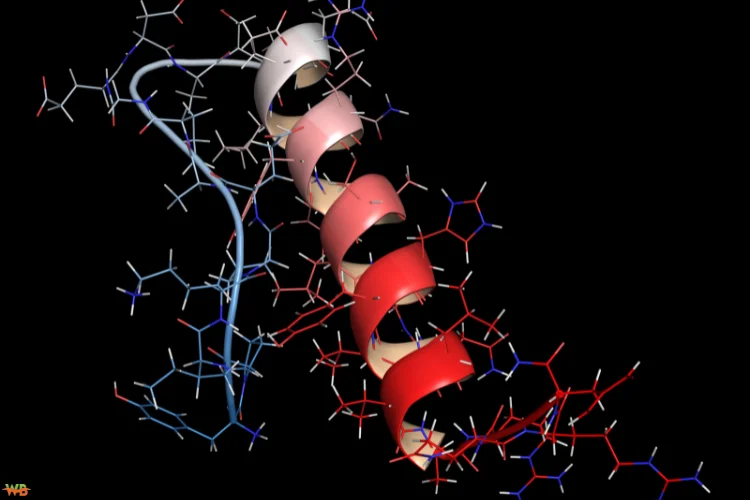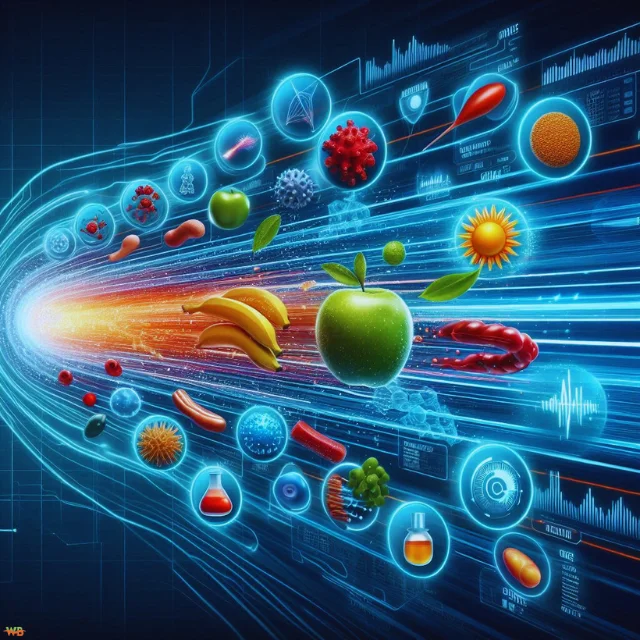Peptides and proteins are essential biomolecules that play critical roles in various biological processes. While proteins are larger, complex structures comprising hundreds of amino acids, peptides are shorter chains of amino acids, typically under 50 residues. Both serve as building blocks for hormone production, immune response, and muscle building.
Importance of Absorption in Nutritional Biochemistry
Absorption is crucial in nutritional biochemistry as it determines how our bodies utilize nutrients from food. Effective absorption of peptides and proteins directly impacts: – Energy levels – Muscle repair and growth – Overall metabolic health Understanding how absorption occurs can help optimize dietary choices and improve health outcomes.
Definitions and Differences
What are Peptides?
Peptides consist of smaller amino acid sequences connected by peptide bonds. They typically consist of 2 to 50 amino acids, making them smaller and easier for the body to absorb than proteins. Their smaller size allows them to penetrate the skin and intestines efficiently, which means they can enter the bloodstream more quickly.
What are Proteins?
Proteins, on the other hand, are larger, complex molecules composed of 50 or more amino acids. They fold into intricate three-dimensional structures and perform a wide range of essential functions in the body, such as building tissues, supporting immune function, and acting as enzymes.
Key Differences Between Peptides and Proteins
Understanding the distinctions between peptides and proteins is crucial:
- Size: Peptides are shorter, while proteins are longer chains.
- Structure: Proteins have complex structures; peptides are usually less defined.
- Function: Proteins serve broader roles in the body, whereas peptides have specific functions, such as signaling and hormonal activity.
This clear demarcation in size, structure, and function underscores the distinct biological roles that peptides and proteins play in health and wellness.
Mechanisms of Absorption
How Peptides are Absorbed in the Body
Peptides are efficiently absorbed through the gastrointestinal (GI) tract and skin. Their smaller size allows them to penetrate cellular barriers easily. For example, the zonula occludens toxin (ZOT) enhances intestinal permeability, facilitating peptide absorption by affecting tight junctions between cells. This means that peptides can rapidly enter the bloodstream, providing faster effects compared to larger proteins.
How Proteins are Absorbed in the Body
In contrast, protein absorption begins in the stomach, where they are broken down by enzymes into smaller peptides and amino acids. These smaller chains then move to the small intestine, where additional enzymes further digest them. The microvilli lining the intestine make up a robust absorptive surface area, allowing efficient uptake of these amino acids into the bloodstream.
Factors Affecting Absorption Rates
Several factors can influence the absorption rates of both peptides and proteins, including:
- Molecular Size: Smaller molecules generally absorb better.
- Formulation: The presence of absorption enhancers can improve uptake.
- Gastrointestinal Health: The integrity of the gut lining and the presence of enzymes can affect absorption.
Food Interactions: Certain foods can improve or impede absorption, making timing essential. Understanding these mechanisms and factors helps create personalized strategies for maximizing nutrient absorption effectively.
Benefits of Peptides
Enhanced Bioavailability
One of the standout benefits of peptides is their enhanced bioavailability compared to larger proteins. Due to their smaller size, peptides can easily penetrate cellular barriers, allowing them to enter the bloodstream more rapidly and effectively. This means they can start working in the body quicker, delivering vital nutrients right when they’re needed.
Specific Therapeutic Effects
Peptides also boast specific therapeutic effects. For example:
Collagen peptides can improve skin elasticity and hydration, reducing signs of aging.
Creatine peptides help enhance muscle strength, making them popular among athletes for recovery and performance.
Easier Digestion
Unlike larger proteins that may cause digestive discomfort or enzymatic degradation, peptides are typically easier to digest. Their shorter chains mean they require less breakdown by digestive enzymes, making absorption smoother. Individuals looking to enhance their nutrient intake without gastrointestinal stress often turn to peptide supplements to enjoy these benefits seamlessly. With their diverse range of health benefits, peptides are an excellent addition to a well-rounded nutrition plan.
FAQs About Peptides
1- Can amino acid chains influence gut health?
- Yes, certain amino acid chains play a role in maintaining gut integrity and supporting digestion. Some short chains can help strengthen the intestinal lining, promoting better nutrient absorption and overall digestive wellness.
2- Are smaller protein structures beneficial for athletic performance?
- Absolutely! Smaller protein structures can support muscle recovery and endurance by providing essential nutrients more quickly. They help reduce fatigue, improve energy levels, and enhance post-workout recovery.
3- Do short amino acid chains have anti-aging benefits?
- Some bioactive compounds derived from amino acid chains are known to support skin hydration, elasticity, and collagen production. This can contribute to reducing fine lines and promoting youthful skin.
4- How do molecular structures affect absorption speed?
- The size and complexity of molecular structures play a crucial role in how quickly they enter the bloodstream. Smaller molecules tend to be absorbed faster, while larger ones require more processing before they can be utilized by the body.
5- Can dietary choices impact the effectiveness of protein-based supplements?
- Yes, consuming certain foods alongside protein-based supplements can either enhance or hinder their effectiveness. Factors like pH levels, enzyme activity, and the presence of other nutrients influence how well these compounds are absorbed and utilized.

I’m Salman Khayam, founder of Wellbeing Junction. I synthesize trusted information from research and expert guidance to create clear articles across health, wellness, and lifestyle topics.
Disclaimer: Content is for informational purposes only and is not medical advice. Consult a qualified expert regarding personal health or specialized questions.




